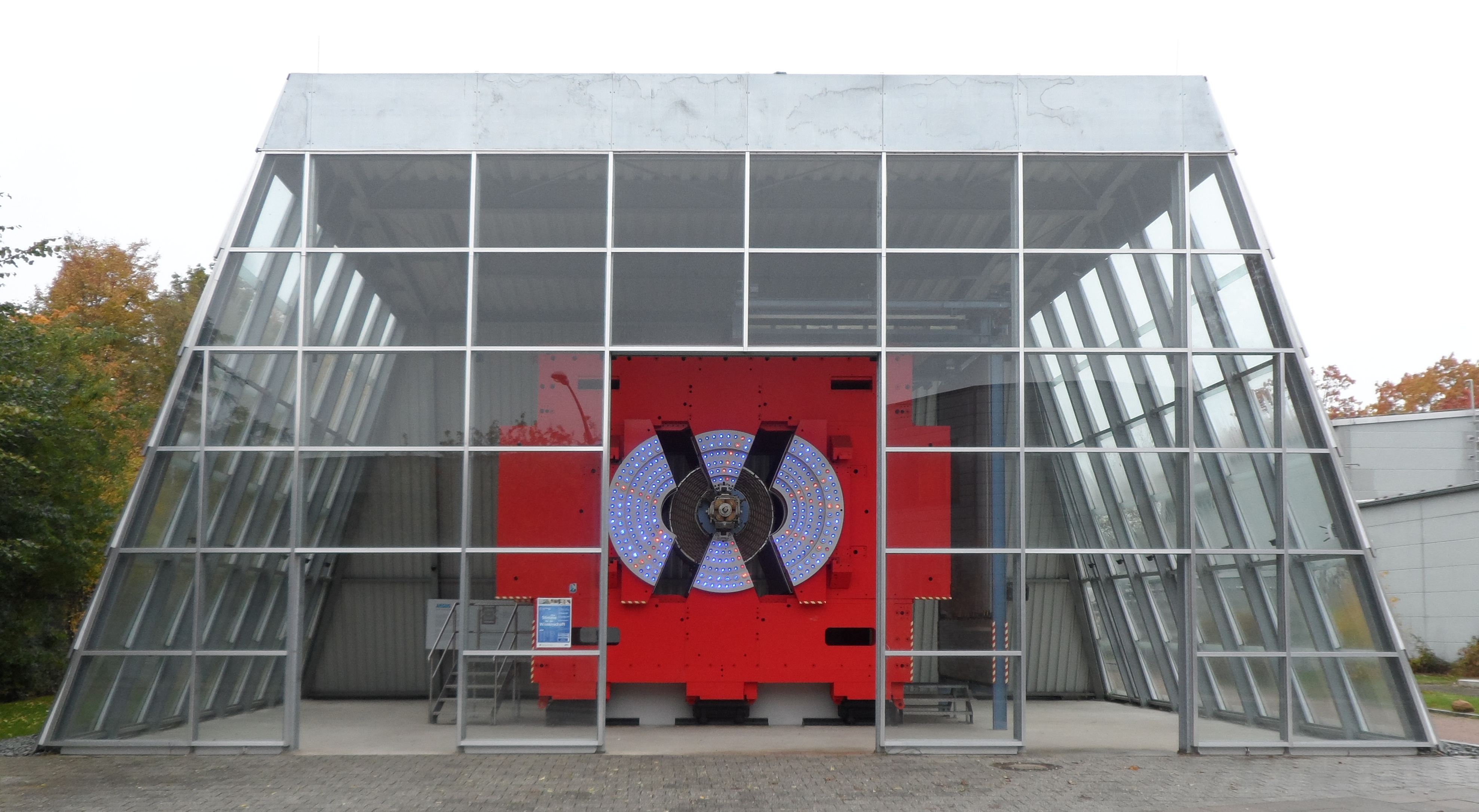ARGUS (experiment) on:
[Wikipedia]
[Google]
[Amazon]
 ARGUS (A Russian-German-United States-Swedish Collaboration; later joined by Canada and the former Yugoslavia) was a
ARGUS (A Russian-German-United States-Swedish Collaboration; later joined by Canada and the former Yugoslavia) was a
Webpage of ARGUS Fest
a symposium to commemorate the 20th anniversary of the discovery of B-meson oscillations. (Last accessed on Sept. 10, 2007)
Record for ARGUS
on
 ARGUS (A Russian-German-United States-Swedish Collaboration; later joined by Canada and the former Yugoslavia) was a
ARGUS (A Russian-German-United States-Swedish Collaboration; later joined by Canada and the former Yugoslavia) was a particle physics
Particle physics or high energy physics is the study of fundamental particles and forces that constitute matter and radiation. The fundamental particles in the universe are classified in the Standard Model as fermions (matter particles) an ...
experiment that ran at the electron
The electron ( or ) is a subatomic particle with a negative one elementary electric charge. Electrons belong to the first generation of the lepton particle family,
and are generally thought to be elementary particles because they have no kn ...
–positron
The positron or antielectron is the antiparticle or the antimatter counterpart of the electron. It has an electric charge of +1 '' e'', a spin of 1/2 (the same as the electron), and the same mass as an electron. When a positron collides ...
collider ring DORIS II at the German national laboratory DESY
The Deutsches Elektronen-Synchrotron (English ''German Electron Synchrotron''), commonly referred to by the abbreviation DESY, is a national research center in Germany. It operates particle accelerators used to investigate the structure of matt ...
. Its aim was to explore properties of charm and bottom quarks
A quark () is a type of elementary particle and a fundamental constituent of matter. Quarks combine to form composite particles called hadrons, the most stable of which are protons and neutrons, the components of atomic nuclei. All commonly o ...
. Its construction started in 1979, the detector was commissioned in 1982 and operated until 1992.
The ARGUS detector was a hermetic detector
In particle physics, a hermetic detector (also called a 4π detector) is a particle detector designed to observe all possible decay products of an interaction between subatomic particles in a collider by covering as large an area around the inte ...
with 90% coverage of the full solid angle. It had drift chamber
A wire chamber or multi-wire proportional chamber is a type of proportional counter that detects charged particles and photons and can give positional information on their trajectory, by tracking the trails of gaseous ionization. was located via ...
s, a time-of-flight system, an electromagnetic calorimeter
A calorimeter is an object used for calorimetry, or the process of measuring the heat of chemical reactions or physical changes as well as heat capacity. Differential scanning calorimeters, isothermal micro calorimeters, titration calorimete ...
and a muon chamber system.
It is the first experiment that observed the mixing of the B meson
In particle physics, B mesons are mesons composed of a bottom antiquark and either an up (), down (), strange () or charm quark (). The combination of a bottom antiquark and a top quark is not thought to be possible because of the top quark' ...
s into its antiparticle, the anti-B meson (in 1987). This observation led to the conclusion that the second-heaviest quark – the bottom quark
The bottom quark or b quark, also known as the beauty quark, is a third-generation heavy quark with a charge of − ''e''.
All quarks are described in a similar way by electroweak and quantum chromodynamics, but the bottom quark has exc ...
– could under certain circumstances convert into a different, hitherto unknown quark, which had to have a huge mass. This quark, the top quark
The top quark, sometimes also referred to as the truth quark, (symbol: t) is the most massive of all observed elementary particles. It derives its mass from its coupling to the Higgs Boson. This coupling y_ is very close to unity; in the Standard ...
, was discovered in 1995 at Fermilab
Fermi National Accelerator Laboratory (Fermilab), located just outside Batavia, Illinois, near Chicago, is a United States Department of Energy national laboratory specializing in high-energy particle physics. Since 2007, Fermilab has been operat ...
.Abe, Fumio, H. Akimoto, A. Akopian, M. G. Albrow, S. R. Amendolia, D. Amidei, J. Antos et al. "Observation of top quark production in p p collisions with the Collider Detector at Fermilab." Physical review letters 74, no. 14 (1995): 2626.
The ARGUS distribution
In physics, the ARGUS distribution, named after the particle physics experiment ARGUS, is the probability distribution of the reconstructed invariant mass of a decayed particle candidate in continuum background.
Definition
The probability dens ...
is named after the experiment. In 2010, the former site of ARGUS at DORISbecame the location of the OLYMPUS experiment.
External links
Webpage of ARGUS Fest
a symposium to commemorate the 20th anniversary of the discovery of B-meson oscillations. (Last accessed on Sept. 10, 2007)
Record for ARGUS
on
INSPIRE-HEP INSPIRE-HEP is an open access digital library for the field of high energy physics (HEP). It is the successor of the Stanford Physics Information Retrieval System (SPIRES) database, the main literature database for high energy physics since the 1970 ...
References